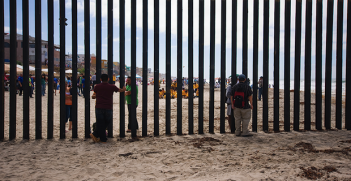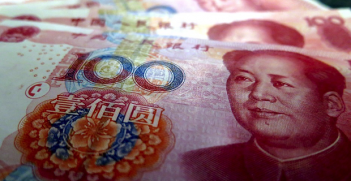The Responsibility to Protect the People of Myanmar
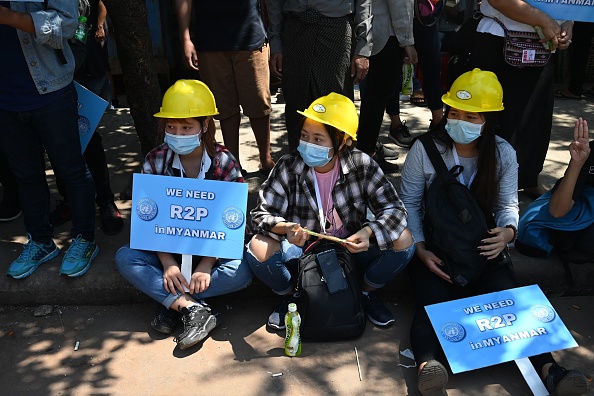
Myanmar’s post-coup crisis unequivocally demands the application of R2P principles. However, internal dynamics are ultimately more likely to prove decisive than even the most robust available external measures.
There have been many distressing images coming out of Myanmar since the Tatmadaw generals’ coup in early February, as the death toll of unarmed men women and children murdered in cold blood by the country’s own security forces has continued to mount alarmingly, recently bypassing 500. Among the most poignant of them have been pictures of people in cities and villages throughout the country marching with banners and placards and building candlelit and waterborne installations all conveying the stark and simple message, “We Need R2P.”
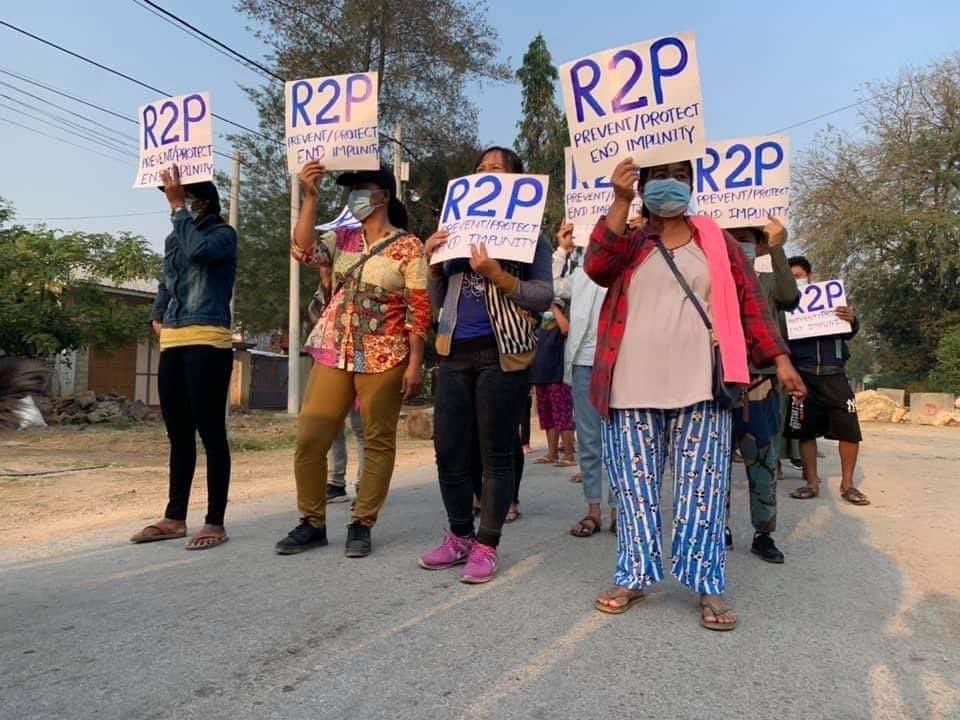
By “R2P,” they are referring to the “Responsibility to Protect” against mass atrocity crimes, the set of principles unanimously adopted by the United Nations General Assembly sitting at head of state and government level at its 60th anniversary World Summit in 2005. R2P has been endorsed thereafter on multiple occasions by the UN Security Council.
Those principles, clear and unequivocal, involve three distinct pillars. First, every state has a responsibility to protect its own population from genocide, ethnic cleansing and other crimes against humanity, and war crimes by neither perpetrating nor tolerating them. Second, every state in the wider international community in a position to do so has the obligation to assist others in meeting their individual responsibility to protect. And third, should a state “manifestly fail” to meet that responsibility to its own people, it is the responsibility of the wider international community to “take collective action in a timely and decisive manner,” including – at the most extreme end of the reaction spectrum – through military intervention, but only if this is endorsed by the UN Security Council.
Getting those principles unanimously embraced by the international community was a hard-won diplomatic enterprise. R2P was born of concern at the failure to reach any kind of international consensus on how to respond to the calamitous genocides in Rwanda and the Balkans in the 1990s. Throughout that decade, in a debate focused solely on military intervention, the Global North paid lip-service to the notion of a “right of humanitarian intervention” in these cases (albeit rarely so acting), while the Global South – deeply conscious of the misuse of imperial power in the past – was profoundly reluctant to accept that any state had any “right” to intervene militarily against another in response to anything, however ugly, happening within its sovereign borders.
The breakthrough came with the report of the Canadian-sponsored International Commission on Intervention and State Sovereignty (ICISS) in 2001, which I had the privilege of co-chairing. The report laid the foundations for previously unachievable consensus in four main ways: changing the language of “right to intervene” to the much less inherently provocative “responsibility to protect”; focusing heavily on prevention as well as just after-the-event reaction; making clear that the reaction toolbox had many more compartments than just military action, including diplomatic isolation, sanctions, arms embargoes, and international criminal prosecution; and insisting that if military action had to be contemplated as a last resort, this could only be with Security Council approval and the bar set very high.
Intense diplomacy over an extended period succeeded in 2005, against nearly all expectations, in translating R2P from paper dream to unanimous General Assembly reality. UN Secretary General Kofi Annan and Sub-Saharan governments, led by South Africa, played critical roles in the negotiations, with crucial support from Canada and Australia. It was an historic achievement, on any view, to have unanimous agreement that mass atrocity crimes were a matter of international peace and security concern, even when committed wholly within the boundaries of a single sovereign state – that they were the whole world’s business, not nobody’s. “Never Again” seemed, at last, to be more than just wishful thinking.
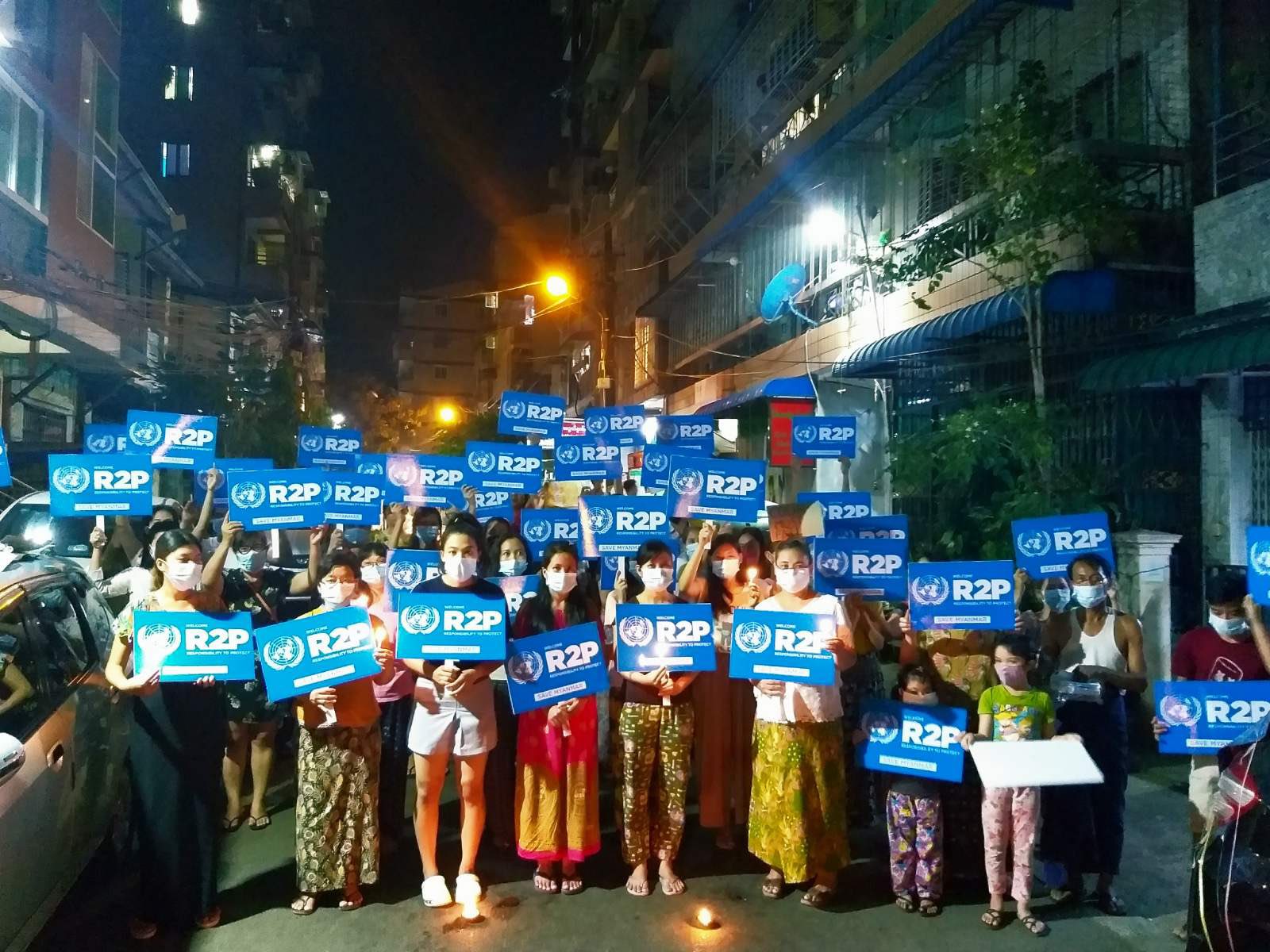
But that was then. Sixteen years later, it has to be accepted that R2P has not had the fundamentally game-changing impact its proponents, including me, had hoped. That said, as I have written elsewhere, the news is not all bad. Its normative language is still almost universally embraced, as annual General Assembly debates and multiple Security Council resolutions make clear – and this has certainly captured the attention, as we have seen, of the people of Myanmar in their present plight. It has been an important institutional catalyst, with many countries and international organisations much better prepared than they were in the past, both in civilian and military terms, and both individually and collectively, to assist in averting and halting crimes against humanity. And explicitly R2P-motivated diplomatic engagement by the UN, African Union, and others has played an important, if largely unnoticed, role in preventing fragile situations from becoming explosive in countries like Kenya, Burundi, and Kyrgyzstan.
But the not so good news is there for all to see where the rubber really hits the road: stopping mass atrocity crimes when actually occurring. Successes and partial successes – in Kenya, again, Cote d’Ivoire, the Congo, South Sudan, and Central African Republic – have been few and far between. Libya in 2011, initially an R2P triumph, turned to ashes when the US, UK, and France insisted on treating its mandate as an invitation to regime change. The Security Council objections of China, Russia, Brazil, India, and South Africa, who had agreed to an initial military intervention explicitly focused on civilian protection, were ignored . In the same year, with Security Council consensus evaporating over Libya, Syria saw no effective international response to Assad’s initial crimes, and it slid into catastrophic, still continuing civil war. There have also been obvious failures to halt atrocity crimes in Sri Lanka, Sudan, Yemen, and now, twice in Myanmar, first with the military’s assault on the Rohingya, and now on the whole civilian population.
The present crisis in Myanmar demands, unequivocally, to be treated as an R2P one, just as the early periods of one-sided repression of peaceful dissent in Libya and Syria. The Tatmadaw and the other security forces it directs have been, and continue to be, guilty of the most heinous crimes against humanity. The situation cries out, as a result, for more robust UN Security Council action than just statements of concern, useful as they have been (and pleasing as it has been to see their non-blocking by China and Russia). And it cries out for more committed, effective action, by every state and organisation, including ASEAN, capable of some impact, however small, in honouring the principles to which all of them signed up in 2005.
There are some obvious limits to the applicability of the R2P norm in Myanmar today. Military intervention is simply not a realistic option, and should not remain part of anyone’s hopes for three very obvious reasons. First, the UN Security Council, with China and Russia both wielding vetoes, will never agree to it. Second, no country in the region or anywhere else has shown any willingness to take up arms against Myanmar, with or without Security Council authorisation. Finally, the prudential considerations identified in the ICISS report, not least the bottom-line requirement that any intervention to be likely to do more good than harm, weigh against it – the Tatmadaw would be a formidable opponent, enabling no easy disabling strike, and absolutely guaranteeing a protracted and very bloody war.
But military intervention is just one element in the R2P reaction toolbox, and there is plenty of room for further focus not only on naming and shaming, but targeted sanctions, coordinated arms embargoes, and threats of
criminal prosecution. In all these areas, unlike military action, if the Security Council fails to act, as probably will remain the case, others still legally can. Targeted financial sanctions, directly impacting the generals’ pockets, are prima facie the ones most likely to have an impact, and it is important that the US and UK have again blacklisted the two sprawling conglomerates, MEHL and MEC, through which the Tatmadaw leadership generates enormous income.
It is true that we have seen the generals shrug off these constraints in the past, and they may well do so again. Given that so many of the Tatmadaw’s dealings in jade, timber, and energy resources bypass the global dollar economy, there are limits on the capacity to bite off the usually effective US finance and banking threats. What might make a real difference would be for Singapore, in particular, to match its stated concerns regarding the generals’ behaviour with some real demolition of their capacity to trade and deal financially through that state. But that will no doubt again be a bridge too far for the highly skilled but abundantly cautious pragmatists who have long dominated Singapore’s foreign policy establishment.
It would also make a difference if Myanmar’s other neighbours showed any kind of serious commitment to changing the generals’ behaviour. China will not. It has no love for the Tatmadaw, but it has even less for the anti-Chinese sentiment of the street, and while wanting calm on its borders, it will do nothing useful to achieve it. Nor will India. Its north-eastern states are deeply troubled, but it is not in Narendra Modi’s DNA to press seriously for human rights redress. The military leadership of Thailand could send serious messages to the Tatmadaw leadership but has so far shown little disposition to do so. Australia joined in the Western defence chiefs’ strong message to their Myanmarese counterparts, but it has dragged its feet on applying even the most obvious new targeted financial and travel sanctions against the military leadership.
ASEAN’s role is more important than anyone else’s. It has shown itself incapable in recent times of acting collectively on anything significant, but Indonesia – and in particular its foreign minister, Retno Marsudi – are to be commended for trying to energise at least some regional momentum for change. If the proposed leaders’ meeting, which Indonesia, Malaysia, and Singapore do seem to have succeeded in energising, does meet soon, there is at least some prospect that Myanmar’s suspension from the organisation will be seriously floated, and that this will do at least something to concentrate the generals’ minds on their present friendlessness.
The larger problem with which all of us have to wrestle is that almost any conceivable form of external pressure or intervention, short of unachievable military intervention, seems unlikely to have any really decisive impact. To an extent greater than almost any recent conflict I can think of, it is the internal, not external, dynamics that currently matter most and seem ultimately more likely to be decisive. The military, for all its self-isolating and self-disciplined remoteness, must now be acutely aware that the popular resistance of 2021 is infinitely more universal, and determined to prevail, in every corner of the country than anything it encountered in 1988 or any other year. It must be acutely aware that many of the ethnic minority militias on its borders are now again showing more interest in reigniting civil war than ceasefires. And, above all, it must also be dawning on the Tatmadaw that Myanmar’s economy is in freefall, and that the country is becoming completely ungovernable.
It seems, unhappily, unrealistic to hope that the military will crumble and eventually collapse under the weight of this realisation, and that the people will succeed in achieving the colour revolution that they want, need, and deserve. It may be that the only game in town, as unsatisfactory in principle as this is, and as unwelcome as it will be to the Myanmarese opposition, will be for the generals to recognise, sooner rather than later, and with encouragement from ASEAN, that their position is unsustainable and that they will need to start looking for a face-saving ladder to climb down whereby things return to something like the status quo ante. While not destroying once and for all the military’s dominance, this may at least be a way out of the present crisis which could avoid a catastrophic national bloodbath.
This is not R2P working as we who have strived passionately for its birth and the people of Myanmar who have so trustingly invoked it would ideally want it to work. But we all have to live with the world as we find it, not as we would want it to be. R2P as an energising principle is neither dead nor dying. If states with any sense of decency continue to apply it, both in supporting the people in every way they can in continuing their struggle, and in creating more pain and a greater sense of friendlessness for the Tatmadaw than they have ever had before, then R2P will have proved its enduring value.
Gareth Evans was Australia’s Foreign Minister from 1988-96, President of the International Crisis Group from 2000-09, and Co-Chair of the International Commission on Intervention and State Sovereignty in 2001. He chairs the International Advisory Board of the New York-based Global Centre for the Responsibility to Protect, authored The Responsibility to Protect: Ending Mass Atrocity Crimes Once and For All (Brookings Institution Press, 2008), and is an Inaugural Fellow of the Australian Institute of International Affairs.
This article is published under a Creative Commons License and may be republished with attribution.



